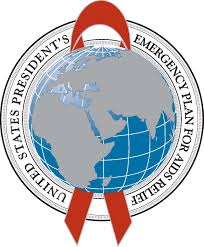By Byron Mutingwende
Makanaka Mukaranga (not her real name) pushes her wheelbarrow to Watsomba Business Centre in Mutasa District, awaiting the commencement of a food distribution exercise by one of the many organisations providing aid in the area.
She is among hundreds of families that were identified to be in need of food assistance following the ravages of the El-Nino induced drought that hit most parts of Southern Africa last year.
“The heat wave that hit most parts of Zimbabwe wiped all of our crops in January last year. That spelt disaster to some of us who are living with HIV because we depend on taking more food as we take our daily tablets, the ARVs,” Mukaranga said, quite relaxed for someone in her condition, a signal that she had received correct information about having the right attitude to the dreaded pandemic.
Mukaranga thanked the government, non-governmental organisations and development partners for coming to the villagers’ rescue by providing food assistance.
The news that the United States Government had provided an additional US$4 million in response to drought affected areas in Zimbabwe that targeted people living with HIV in the most severely affected areas of the country was sweet music to her ears.
This funding brings the total U.S. support to alleviate the effects of drought to $131 million, assisting 2 million people since June 2015. The funding comes from the U.S. President’s Emergency Plan for AIDS Relief (PEPFAR) through the U.S. Agency for International Development (USAID).
“The activities will be implemented by the World Food Programme (WFP) and the United Nations Children’s Fund (UNICEF). USAID’s support to WFP will expand its nutrition activities at health clinics across Harare, Bulawayo, and Mutasa District, with a focus on providing food assistance and nutrition rehabilitation for malnourished individuals living with HIV and TB. With this funding, WFP will scale up its assistance from the current 2,348 beneficiaries to over 27,000 individuals in the coming months,” the US Embassy said in a statement Tuesday.
USAID’s funding to UNICEF is expected to expand its water, sanitation, and hygiene activities in 10 drought-affected districts with high HIV prevalence. These activities will target 350,000 beneficiaries and aim to reduce morbidity and mortality from diarrheal diseases.
“These additional resources will complement US$127 million in emergency drought assistance which has been provided by the American people since the onset of the drought,” stated USAID Zimbabwe Mission Director Stephanie Funk. “We stand with the people of Zimbabwe as the effects of this drought continue. USAID continues to address Zimbabwe’s immediate food needs while also building resilience against future droughts.”
“Food security is especially critical for people living with HIV,” stated WFP Country Representative Eddie Rowe. “These resources will ensure that people living with HIV can access the food and nutrients they need to adhere to treatment and live healthy, productive lives.”
UNICEF Country Representative Dr. Mohamed Ag Ayoya added, “The rainy season has increased the risk of diarrheal diseases as many families, including people living with HIV, still do not have access to safe water and sanitation. This funding will enable us to save lives by increasing access to safe water, improving sanitary conditions, and providing much-needed information on hygiene and HIV.”
People living with HIV are particularly vulnerable to food insecurity, malnutrition, and diarrheal diseases. HIV treatment is more effective for those who are properly nourished, and antiretroviral medications should not be taken on an empty stomach. Lack of food is directly correlated with non-adherence to treatment, which can lead to increased viral load, opportunistic infections, progression of the disease, and a higher risk of transmitting HIV to others. Food insecurity can also pressure people into harmful coping strategies, such as transactional sex, which can make them more vulnerable to HIV infection.
PEPFAR contributed $135 million toward Zimbabwe’s national response to HIV and AIDS in 2016, bringing total U.S. funding for the HIV epidemic to over $650 million since 2006.
